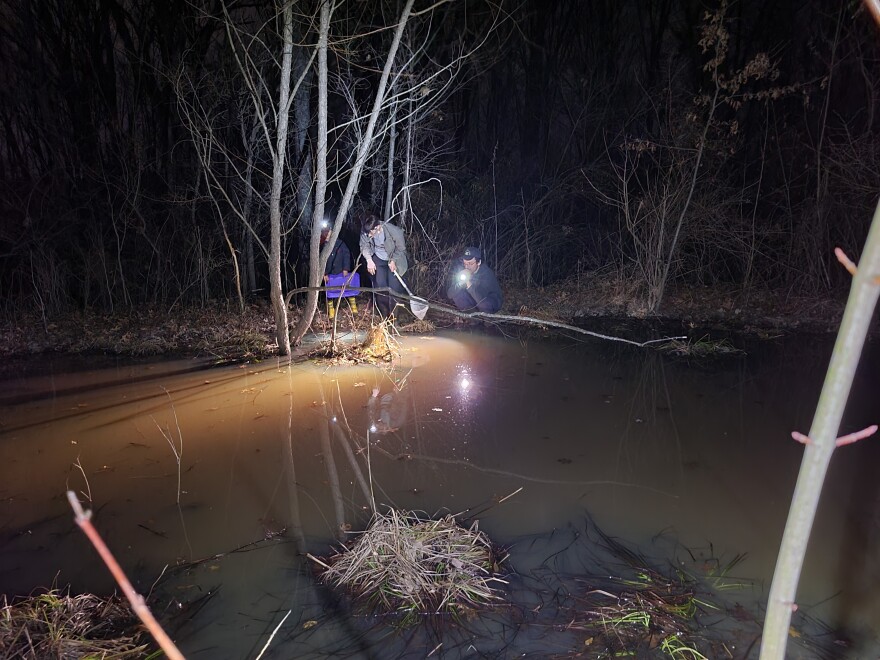In the waning days of winter, as the temperatures begin to rise into the 40s, many species of amphibians begin their annual migration from where they've hidden during the colder months to their breeding grounds in marshy vernal pools.
The loudest are the spring peepers. Their shrill peeping sounds — almost like a bird whistle — can be heard from quite a distance. Many of them calling at the same time can create a cacophony loud enough to set off decibel warnings on your smartphone or watch.
On a warm evening on the last day of February, however, Great Parks Eastern Region Interpreter Lisa Salehpour is listening for a different call among the spring peepers at Woodland Mound.
"The Western chorus frog sounds a lot like if you ran your fingernail across the teeth of a comb," Salehpour explains.
The Western chorus frog is about the same size as the spring peeper and likes similar habitats, but it's not found as commonly as its loud cousin. It usually has three dark stripes down its back, reaching from the nose and eyes. Sometimes the stripes are broken into rows of spots.
"Last year, when we were out here looking for amphibians, we heard some Western chorus frogs, which was very exciting," Salehpour says.
She has yet to lay eyes on one in Hamilton County — doing so would be a "special find," she says.
The Ohio Department of Natural Resources lists the Western chorus frog as found in Hamilton County, but Salehpour points out there are no observations of the amphibian in Hamilton County listed on the citizen-science website, iNaturalist, nor is it listed on the Ohio Herp Atlas, another citizen-science database specific to amphibians and reptiles.
"Generally, amphibians are a great indicator species for the health of ecosystems, so any one [species] that's thriving is good news," she says, adding that it would be great news for Great Parks if the Western chorus frog is making a home at Woodland Mound.
"That could indicate that we have good habitat here, which is really good for a conservation organization like Great Parks, but also that maybe the frog is successfully breeding and surviving in Southwest Ohio, which is great news."
Salehpour will have to keep looking. While amphibian hike participants heard the distinctive nail-on-a-comb call, the frog remained hidden from sight.



